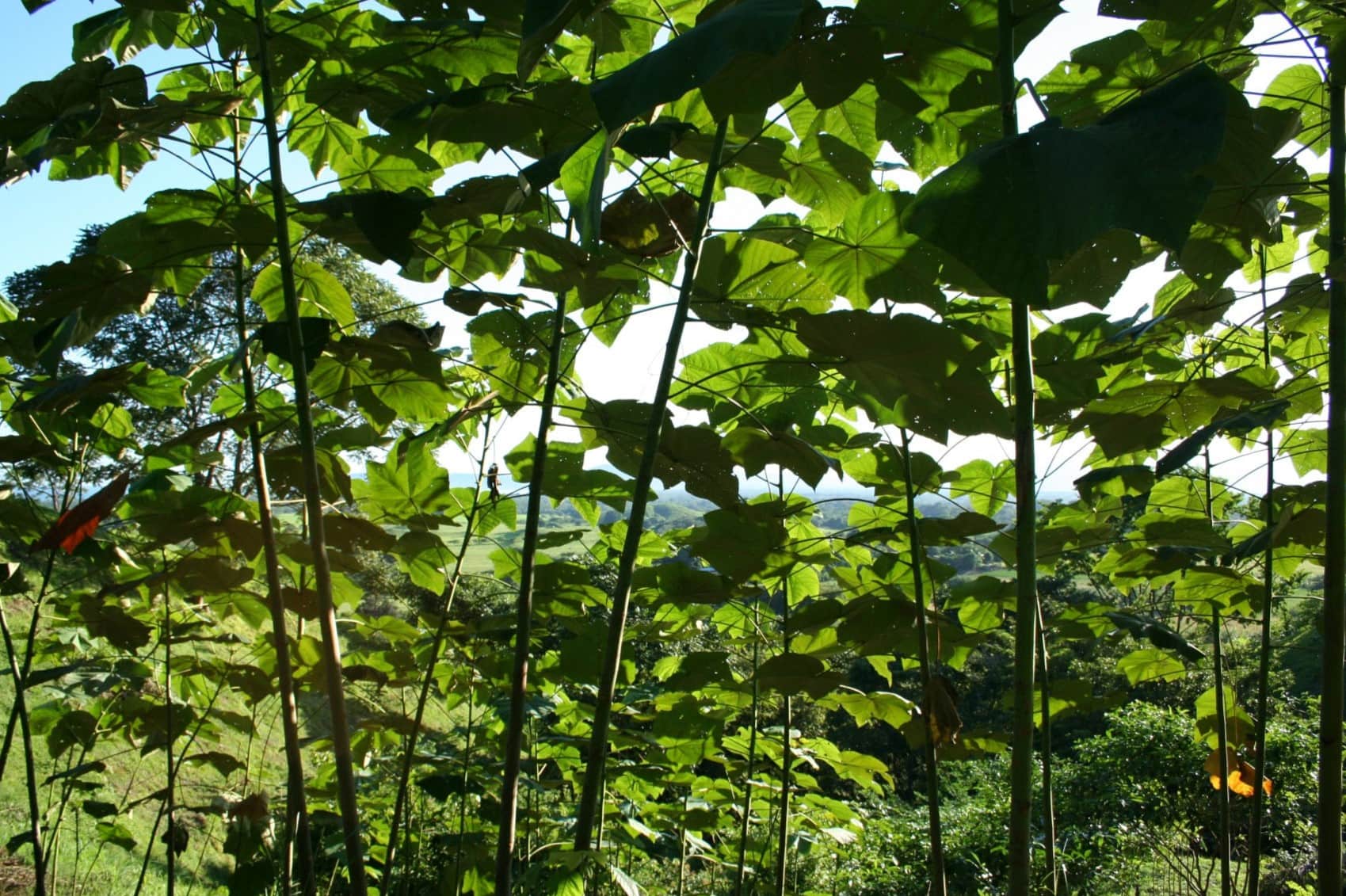
Balsa wood, derived from the Ochroma pyramidale tree, is renowned for its remarkable lightweight and versatile properties. This exceptional tree, native to the tropical forests of Central and South America, has captivated the interest of scientists, artisans, and nature enthusiasts alike. From its eco-friendly attributes to its diverse applications in various industries, the balsa wood tree stands as a testament to nature's ingenuity.
In this article, we delve into the fascinating world of balsa wood trees, uncovering 11 intriguing facts that shed light on their significance and impact. Join us as we embark on a journey through the lush canopies of these remarkable trees, exploring their unique characteristics and the valuable role they play in our lives. Whether you're a woodworking enthusiast, a nature lover, or simply curious about the wonders of the natural world, these balsa wood tree facts are sure to pique your interest and deepen your appreciation for this extraordinary botanical marvel.
Key Takeaways:
- Balsa wood trees, native to Central and South America, grow rapidly and are prized for their lightweight wood, used in everything from model airplanes to wind turbine blades.
- These majestic trees not only contribute to the rainforest ecosystem but also have cultural significance, with their wood being used in traditional medicine and the production of musical instruments.
Balsa wood trees are native to Central and South America.
Balsa wood trees, scientifically known as Ochroma pyramidale, are indigenous to the tropical rainforests of Central and South America. These towering giants thrive in the warm and humid climate of the region, where they play a crucial role in the ecosystem.
The Balsa wood tree is one of the fastest-growing trees in the world.
With an astonishing growth rate, Balsa wood trees can reach impressive heights in a relatively short period. Their rapid growth makes them a valuable resource for various industries, including construction, crafts, and even aerospace engineering.
Balsa wood is renowned for its exceptional lightness.
The wood derived from Balsa trees is remarkably lightweight, making it highly sought after for numerous applications. Its unparalleled lightness, combined with impressive strength, renders it ideal for crafting model airplanes, boats, and architectural prototypes.
Balsa wood is often used in the construction of wind turbine blades.
Due to its exceptional strength-to-weight ratio, Balsa wood is a preferred material for constructing wind turbine blades. Its resilience and lightness enable the efficient harnessing of wind energy, contributing to sustainable power generation.
The Balsa wood tree produces large, vibrant flowers.
During the blooming season, Balsa wood trees adorn themselves with large, vibrant flowers that add a splash of color to the lush rainforest landscape. These striking blossoms attract various pollinators, playing a vital role in the tree's reproductive cycle.
Balsa wood is a popular choice for crafting surfboards.
Surfing enthusiasts appreciate the buoyancy and flexibility of Balsa wood, which makes it an excellent material for shaping high-performance surfboards. Its natural buoyancy allows for effortless maneuvering on the waves, enhancing the surfing experience.
Balsa wood trees have a significant ecological impact.
In their natural habitat, Balsa wood trees contribute to the biodiversity and ecological balance of the rainforest. They provide shelter and sustenance for diverse wildlife, underscoring their importance in preserving the delicate equilibrium of the ecosystem.
Balsa wood trees have a shallow root system.
Despite their towering stature, Balsa wood trees possess a shallow root system. This unique adaptation allows them to thrive in the nutrient-rich topsoil of the rainforest, where they efficiently absorb water and nutrients essential for their rapid growth.
Balsa wood is favored for creating intricate scale models.
Model enthusiasts and hobbyists prize Balsa wood for its ease of carving and shaping, enabling the creation of intricate scale models with precision and finesse. Its workability and lightweight nature make it an ideal choice for bringing detailed replicas to life.
Balsa wood trees play a role in traditional medicine.
In some indigenous cultures, various parts of the Balsa wood tree are utilized in traditional medicine. The bark and leaves are believed to possess medicinal properties and are used in remedies for common ailments, showcasing the tree's cultural significance.
Balsa wood is utilized in the production of acoustic musical instruments.
The exceptional acoustic properties of Balsa wood make it a preferred material for crafting musical instruments such as guitars and violins. Its resonance and tonal qualities contribute to the rich and melodious sound of these instruments, captivating music enthusiasts worldwide.
The Balsa wood tree, with its rapid growth, exceptional lightness, and versatile applications, holds a prominent place in the natural and cultural tapestry of Central and South America. Its significance extends beyond industrial and artistic realms, playing a pivotal role in the intricate web of the rainforest ecosystem. As these majestic trees continue to captivate with their vibrant blooms and sustain diverse forms of life, their legacy endures, rooted in tradition and innovation alike.
Conclusion
In conclusion, balsa wood trees are truly remarkable in their unique characteristics and versatile applications. From their rapid growth rate to their lightweight yet durable wood, balsa trees have captured the fascination of scientists, engineers, and nature enthusiasts alike. Their significance in various industries, including aerospace and model making, underscores the invaluable contribution of these trees to human innovation and creativity. As we continue to explore sustainable materials and eco-friendly solutions, the balsa wood tree stands as a testament to the ingenuity of nature and the potential for harmonious coexistence between humans and the natural world.
FAQs
What are the main uses of balsa wood?
Balsa wood is widely used in various industries, including aerospace, model making, and construction. Its lightweight yet strong properties make it ideal for creating aircraft models, architectural prototypes, and even surfboards.
Are balsa wood trees endangered?
Balsa wood trees are not considered endangered. They are known for their rapid growth, with some species reaching maturity in as little as 6 to 10 years. Additionally, sustainable forestry practices are employed to ensure the conservation of balsa wood trees for future generations.
Was this page helpful?
Our commitment to delivering trustworthy and engaging content is at the heart of what we do. Each fact on our site is contributed by real users like you, bringing a wealth of diverse insights and information. To ensure the highest standards of accuracy and reliability, our dedicated editors meticulously review each submission. This process guarantees that the facts we share are not only fascinating but also credible. Trust in our commitment to quality and authenticity as you explore and learn with us.


